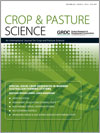During the last two decades in Western Australia, the traditional mixed farming system has been increasingly displaced by intensive crop sequences dominated by wheat. Intensive wheat sequences are usually maintained by using suitable breaks, including pasture, fallow, or alternative cereal, oilseed and legume crops, to control weeds and disease, or maintain the supply of nitrogen to crops. New cereal fungicide options may also assist to maintain intensive cereal systems by suppressing soilborne cereal diseases. To guide the successful diversification of intensive cereal systems, we evaluated the effect of a 2-year experimental matrix of 10 different sequence options. Wheat in the sequence was treated with the fluquinconazole fungicide Jockey (wheat J) to control soilborne pathogens, or with the usual seed dressing of flutriafol fungicide (wheat – J), used for control of bunts and smuts only. The sequences were wheat J, wheat – J, barley, grain oats, oaten hay, canola, lupin, field pea, oat–vetch green manure, bare fallow) in which all treatment combinations were grown in year 2 following the same 10 treatments in year 1. In year 3, wheat J was grown across the entire area as the test crop. In year 2, grain yields of all crops were reduced when crops were grown on their own residues, including wheat (22% reduction), canola (46%), lupin (40%) and field pea (51%). Wheat J significantly outyielded wheat – J by 300 kg ha–1 in year 1 (14% increase) and 535 kg ha–1 in year 2 (26% increase). Wheat J was more responsive to break crops than wheat – J in both year 1 and year 2. Break crops sown in year 1, such as canola, fallow, field pea, lupin and oaten hay, continued to have a positive effect on year 3 wheat J yields. This study has highlighted the importance of break crops to following cereal crops, and provided an example in which a seed-dressing fungicide fluquinconazole in the presence of low levels of disease consistently improved wheat yields.
How to translate text using browser tools
29 May 2015
Dynamic crop sequencing in Western Australian cropping systems
Raj S. Malik,
Mark Seymour,
Robert J. French,
John A. Kirkegaard,
Roger A. Lawes,
Mark A. Liebig
ACCESS THE FULL ARTICLE

Crop and Pasture Science
Vol. 66 • No. 6
May 2015
Vol. 66 • No. 6
May 2015
break crops
dynamic crop sequence
seed dressing
wheat




